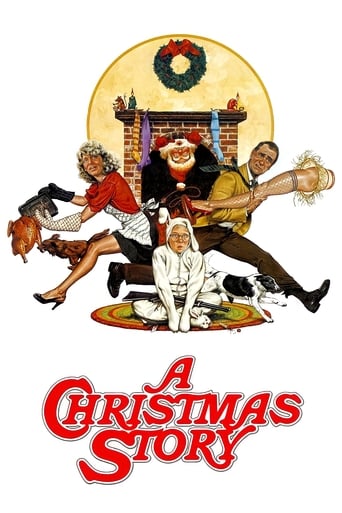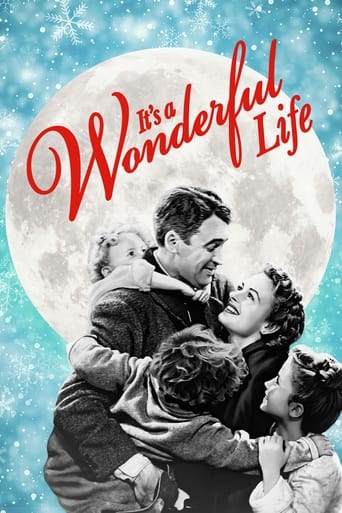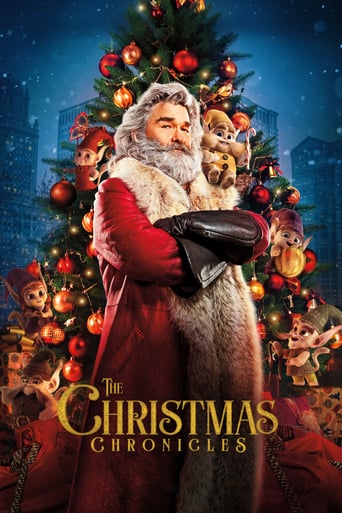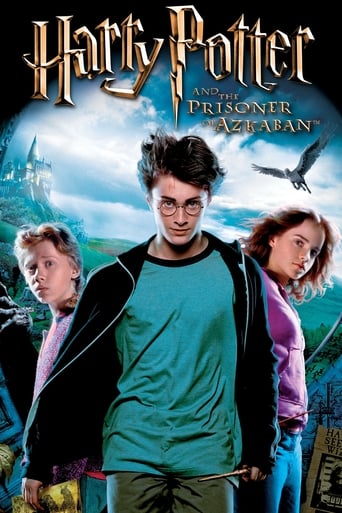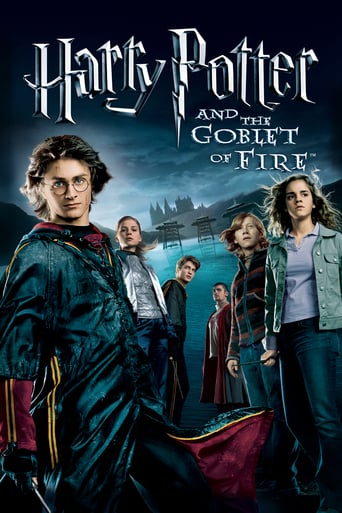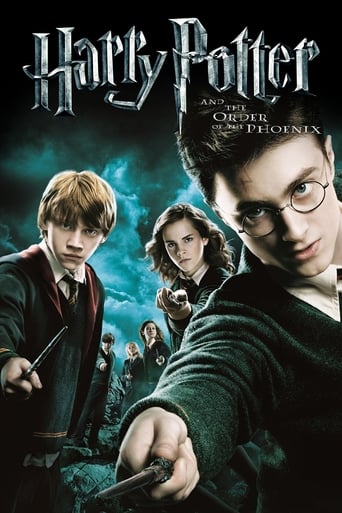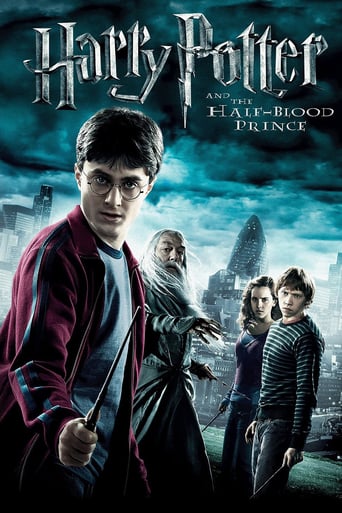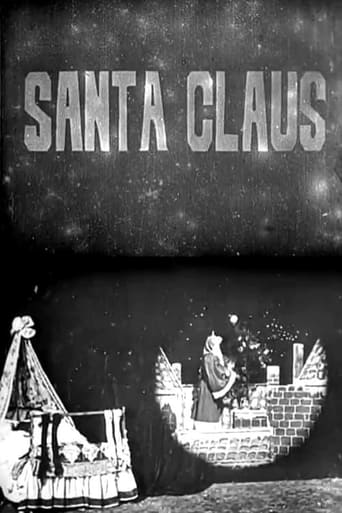
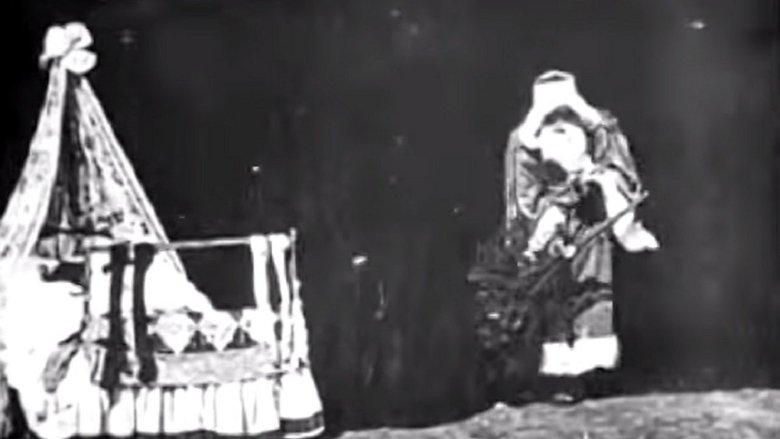
Santa Claus (1898)
Santa arrives at a house on Christmas Eve to deliver his presents for the children.
Watch Trailer
Cast


Similar titles
Reviews
I like the storyline of this show,it attract me so much
After playing with our expectations, this turns out to be a very different sort of film.
Through painfully honest and emotional moments, the movie becomes irresistibly relatable
It’s fine. It's literally the definition of a fine movie. You’ve seen it before, you know every beat and outcome before the characters even do. Only question is how much escapism you’re looking for.
British short film made near the end of the 19th century. Which is very cool to me, by the way, watching something made before my great-grandparents were born. It's a little over a minute long and basically just shows Santa Claus visiting a house on Christmas Eve. Interesting for historical reasons, both for film history and Christmas/Santa history. It's hard to rate a thing like this. For the most part, when I rate a movie or short or TV show, I tend to rate it on a technical level compared to similar pieces of its time or before. I also consider historical importance but ultimately entertainment value trumps all for me. This entertained me as much as a minute and change short from 1898 possibly could, and it has some technical prowess for the time on display. So that's where I'm coming from rating this as high as I did. Others will rate it higher but I just couldn't and I felt like rating it lower would be unfair.
Possibly the earliest? In any case, it's the earliest I've seen. The kids are taken to bed, they hang out their stockings and Santa arrives through the snowy landscape while they're deep asleep and fills their stocking with candy. Unfortunately the film ends before we see the joy and delight in the brother's and sister's eyes the next morning. It's certainly one of the best films for children of its era and it's even worth showing it to your little ones today. An interesting fact about it is also the idea in people's minds back then that even the Christmas tree is brought by Santa, a truly uncommon approach today. However, my favorite part had nothing to do with the holiday feeling it delivers. It was the way the moment the mother switched off the light and how our perception of the room is changed by the director at this exact moment. Excellent display of fade to darkness and a short film I'd easily recommend to people all ages, especially those who are about to get into the silent film genre. A very entertaining minute.
George Albert Smith was one of early cinema's most important pioneers; he was, perhaps, even more innovative than his more acclaimed contemporaries, namely, Edwin Porter and Georges Méliès. He is surely less popular because he didn't create as elaborate of story films, but he did pioneer many narrative techniques and opened up new possibilities for the art form. In 1898, the year of this picture, fiction films were still in their infancy. "Santa Claus" involves a one-minute, single-scene story of Santa Claus visiting two children as they sleep. Yet, this was the normal length and narrative simplicity of early fiction films, and Smith's presentation of this story was innovative.One point of interest of this film is the appearance of Santa Claus, although he had already appeared in previous films. Additionally, seasonally-timed releases began early in film history, and Smith having made this film in September (see "The Beginning of the Cinema in England" by John Barnes) would have allowed exhibitors time to purchase it for the Christmas season. By the end of the 19th Century, Christmas had essentially become the holiday that we know today, including some of the commercialism. American cartoonist Thomas Nast had already transformed the image of Santa Claus. In England, however, this film has a rather thin Santa with a loose robe. Nevertheless, he's readily recognized, and the story follows Santa entering a home through the chimney and delivering presents to children as they sleep.Another interesting aspect of this film is it's the earliest one I've seen or heard of which includes its title within the film--lettered at the beginning, as is the case with most movies since. In the beginning, films didn't include their own titles within the picture, but catalogues would list the titles of the films and exhibitors would often either create their own title card slides or have a lecturer inform audiences verbally of the titles of films. Later, in such films as "The House That Jack Built" (1900) and "Dorothy's Dream" (1903), Smith pioneered the use of intertitles.Most interesting, however, is Smith's use of then novel trick effects to present the film's narrative. Smith stopped the camera to cover the set in black drapes to represent darkness after the nurse turns off the lights for the children to sleep. Although it's obvious today that drapes cover the stage, it was a creative effect then, especially since the black background was needed for the following multiple exposure photography, which is the film's most brilliant aspect.Somewhere from around July to October of 1898, Smith made at least six films that employed the multiple exposure, or superimpositions, trick. It's somewhat unclear whether Smith or Georges Méliès introduced this technique to motion pictures. Smith tried to patent the application of it to motion pictures, but that was frivolous since it was already in use in still photography. The earliest film that I know of to use superimpositions is Méliès's "The Cabinet of Mephistopheles" (Le Cebinet de Méphistophélès) (1897), which appears to now be lost. The uncertainty is somewhat moot, however, given that Méliès and Smith are known to have had discussions around the time of these inventions, and both filmmakers were leaders in exploring the possibilities of the art form.As in Méliès's film, Smith used double exposure for ghostly images, but in others, such as "Santa Claus", he masked the camera lens for a circular vignette of the secondary image within the original scene. Smith seems historically uncontested in having introduced masking to cinema. Before entering the business of film production, Smith was a magic lantern lecturer, and the vignette scene-within-a-scene images on magic lantern slides were surely his inspiration for these films. In addition to "Santa Claus", Smith created a scene-within-a-scene as a vision presented by a supernatural being in "The Corsican Brothers", "Cinderella" and 'Faust and Mephistopheles'. "Santa Claus" seems to be the only one of these multiple-exposure experiments from 1898 that still exists today (outside of a few stills). Additionally, the "vision" in "Santa Claus" is somewhat different from those described in his other films.The film allows for some interpretation of its vision, too. On one hand, the trick allows for the presentation of parallel action without crosscutting between shots, which probably makes this the earliest instance in film history of showing two simultaneous actions of differing locations (the children in bed and Santa Claus on the rooftop). In later films, such as Méliès's "Le Voyage dans la lune" (1902) and Porter's films "Life of an American Fireman" and "The Great Train Robbery" (both 1903), filmmakers used temporal repetition to present parallel action, or to show events from different perspectives. The earliest instances of crosscutting between shots that I've heard of began with Vitagraph and Pathé productions around 1906.On the other hand, the vision and Santa Claus may be the children's dream. The catalogue description provided by Barnes supports this interpretation, as it describes the effect as a "dream-vision". Additionally, Santa Claus doesn't appear until the children appear asleep. This is, again, probably a first in film history. Porter used the same technique in "Life of an American Fireman", and other filmmakers soon used the multiple exposure technique, if not a similar circular mask, for dreams and other visions. The earliest matte shots, such as in "The Great Train Robbery", too, I believe, used masking.I prefer to consider the vision both a dream and an instance of parallel action, and it's certainly an instance of parallel action whether or not it's a dream. Both of these elements would introduce new dimensions to cinema. Shortly after this film, Smith introduced the representation of dreams in separate scenes in "Le Me Dream Again" (1900). He was a remarkable filmmaker.
Although D.W. Griffith is usually honored as the inventor of modern film grammar, most of the groundwork was laid down a decade earlier by George Smith of England. This is one of his early films.But even this particular Athena did not spring fully born from the mind of Zeus, and we can see that Smith is using a lot of magic lantern grammar -- the children dream of Santa and he appears in a small circular image in the upper right corner, straight out of the preceding technology's grammar. This particular technique would not vanish for another decade and a half -- and arguably is still in occasional use in such peculiarities as SHERLOCK JUNIOR and its successor THE PURPLE ROSE OF CAIRO as well as Jeunet's UN LONG DIMANCHE DE FIANCAILLES. Another point of interest is the title of this movie. Although Clement Clarke Moore's poem, 'A Visit from Saint Nick' was well known and popular, it's a Dutch and New York and hence American phenomenon. What was an Englishman, with their Father Christmas, doing playing with the idea? It seems to me that Smith may have been a far more important figure in popular culture than even I thought.


